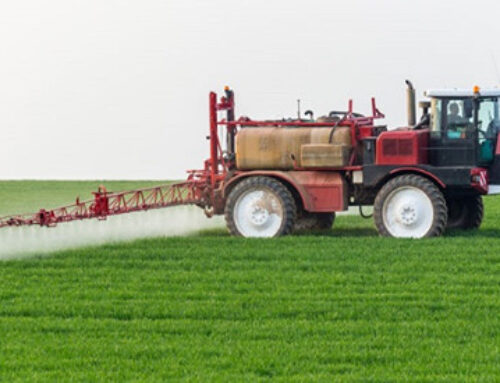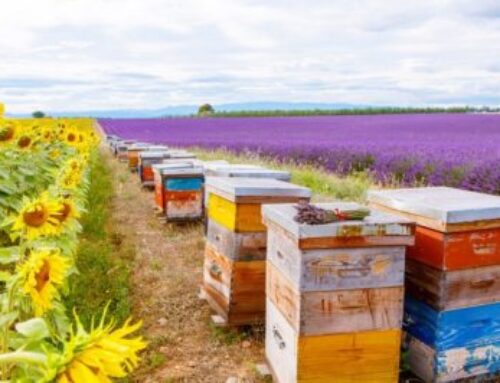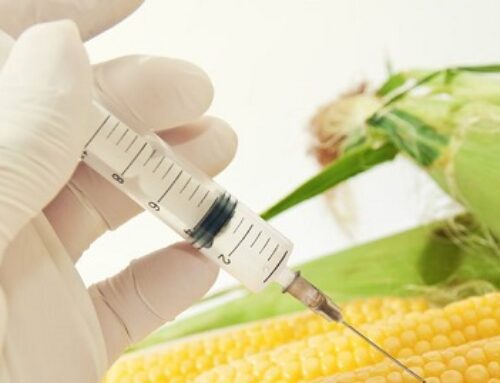For years, I have encouraged my clients to consider buying only grass-fed meats for the sake of better nutrition. Studies show that all types of grass-fed or pastured meats are a much healthier choice; here’s why.
Cows raised conventionally typically spend the first five to six months of their lives on pasture and then are finished in stockyards (confined animal feeding operations, or CAFOs). Once they are taken off pasture and moved to the stockyard, they have their diet dramatically altered, and the new diet is designed to fatten them up as quickly as possible. This means substantially more money for the industrialized beef industry as the animal can go to slaughter in a shorter amount of time (grass-fed beef takes 18 to 24 months to fatten for slaughter and industrialized beef takes on average about 12 months). But the animal pays the price as their health begins to deteriorate under these conditions, and so do we when we consume the unhealthy protein from these conventionally raised animals.
What are these animal being fed that fattens them up so quickly? If you’ll humor me, I will provide some background on the physiology of a cow. Cows are ruminants, meaning they eat grass. With a bacterial based digestive system, they are designed to efficiently digest grass in a way we cannot. Cows have four stomachs and three of these stomachs are loaded with bacteria which, through the process of fermentation, breaks down the cellulose in grass. The fourth stomach produces acid and enzymes to break down the microbial bodies that digest the cellulose. Through this process, cows are able to turn that grass into pure protein, which we digest beautifully thanks to our acid based digestive system (this all works very well, unless our digestive system is not working right).
When a cow is taken off pasture and moved to a stockyard for fattening, a new diet is introduced; and eventually the grass diet is completely removed and the cattle are transitioned to a grain based diet, GMO corn or soy usually, but there are other shocking things added to their diet to fatten them up as well. The industry has a cheap trick up its sleeve: they buy candy left over from the candy manufacturing industry1. Gummy worms, hard tack, skittles, even chocolate that cannot be sold to the public is purchased by farmers, sometimes at one third the cost of corn, and fed to cattle, knowing full well the cattle will fatten up just as efficiently as we fatten up on this type of diet! Like magic!
Cows are not the only animals that are fed an atrocious diet. About 80% of the antibiotics manufactured in the U.S. are put into animal feed2,3. For many years is was a mystery why antibiotics caused weight gain in animals. We now know it is because the antibiotics kill much of the good bacteria in the animals’ gut, which causes an imbalance of microbes in the stomach, much like antibiotics do in humans. When there is an imbalance in gut microbes, opportunistic microbes can take hold and increase in numbers. Opportunistic microbes, also referred to as pathobionts, are a part of a cow’s microbiome and do no harm until their numbers increase to a certain level. At that point, they become pathogenic. Many of these undesirable microbes are known to cause weight gain. Cows can get fat on antibiotics, and so can we!
I wish I could say that was the extent of the deceit, but it is not. It is also standard in the cattle industry to use hormones to fatten the herd. When a cow is young, a hormone pellet is inserted into its ear. This pellet releases estrogen into the animal’s blood stream, resulting in increased weight gain. You see, a grass-fed cow is actually quite lean. There is not nearly as much fat in pastured beef as there is in industrial raised beef. And the fat in grass-fed beef is a healthier, higher quality type of fat, much higher in omega-3 fatty acids than industrialized beef4. The fatty acid profile of grain-fed beef is high in omega-6 fatty acids, which are inflammatory and are known to contribute to heart disease4, and it can be assumed that the fatty acid profile of candy-fed beef is even worse.
Though some of you may have known about these industry secrets, I’ll wager the following information will surprise you. The article Are Banned Drugs in your Meat offers more disappointing news about what ends up in the typical industrialized beef, chicken, pork and turkey most Americans consume5. Governmental inspection agency tests have shown trace amount of several dangerous drugs in commercial meat, including the hallucinogenic drug and antidepressant ketamine, an antibiotic that can cause deadly anemia called chloramphenicol, and the anti-inflammatory phenylbutazone, which was banned due to its danger to humans5. It is completely insane that these toxins have been found in our industrialized meat. They are dangerous drugs that should never be in our food supply.
There are some rules in place to protect us, like the fact that some types of drugs allowed for the treatment of sick animals must be out of their system by the time they go to slaughter. But, it was found that is not always the case, and often there are traces of these drugs in the samples taken5. The system is not perfect and there are not enough resources to examine every animal before it is processed.
Then, of course, there are the ‘levels’ of certain drugs to consider. The government has deemed certain levels as safe. What we are told is safe and what is actually safe may be two different numbers, like the difference between a dose toxic enough to kill you and a dose that can make some individuals chronically ill.
I find it particularly disturbing that there seems to be no effort on the part of our government to alert the public about these dangerous, banned drugs and chemicals that are sometimes found in our meats. It seems there is very little (maybe none) regulatory oversight in place to deal with these types of contamination. And so these problems can easily slip by. Of course not every animal is tested anyway, only a small percentage of animals are ever tested, so how much gets by without anyone ever knowing about these contaminants? Testing equipment is now sensitive enough to detect these contaminants in our food supply.
I recommend now more than ever that we make a conscious effort to procure healthy, clean, pastured meats of all kinds. Find local farmers who are still farming the old fashioned way and get to know them personally, so you can be assured of the quality of your food. (See my article: The Wisdom of Our Ancestors) Do this for the sake of the animals that are our food animals—they deserve much better than what they get with industrial farming (which, in my opinion, is abuse) and realize this is also good for our planet. Industrialized beef contributes to a much bigger carbon foot print than grass-fed beef6. Make these changes for the sake of our health and for our children’s health.
Sickness of all types is epidemic in our country and if you check the research, it clearly shows the diet consumed will either create a healthier life for us with a much better chance of avoiding the most common diseases of our time, or degrade our health to where we are spending large chunks of our money and time at our doctors’ office and buying prescription drugs. Clearly, the industrialized meat, pharmaceutical and medical industries are the ones thriving on this system. But we are not!
Also see my article: Amino Acids are the Unsung Heroes of Mental Health
For associations that support healthy sustainable farming practices, check out:
Price-Pottenger Nutrition Foundation
The Weston A. Price Foundation
Cited References:
- Smith A. Cash-strapped farmers feed candy to cows. CNN Business web site. Available here. Published October 10, 2012. Accessed November 2018.
- McKenna M. Update: Farm animals get 80 percent of antibiotics sold in U.S. Wired web site. Available here. Published December 14, 2010. Accessed November 2018.
- Beef web site. 5 trending headlines: Select beef a thing of the past? Available here. Published December 3, 2018. Accessed November 2018.
- Masterjohn C. Fatty acid analysis of grass-fed and grain-fed beef tallow. Weston A Price web site. Available here. Published January 21, 2014. Accessed November 2018.
- Peachman R. Are banned drugs in your meat? Consumer Reports web site. Available here. Published November 27, 2018. Accessed November 2018.
- Murphy E. New study finds grass-fed beef reduces carbon footprint. Oregon State University web site. Published Summer 2012. Accessed November 2018.










